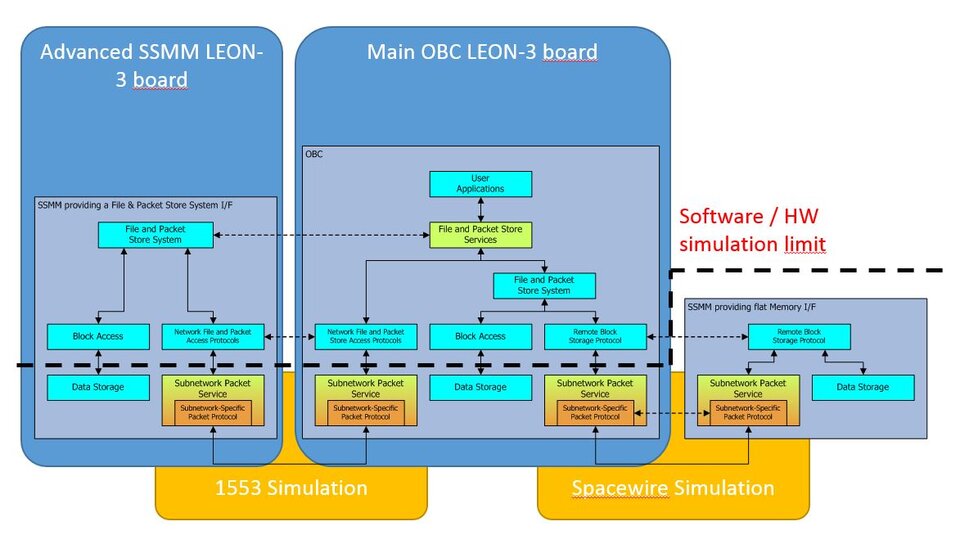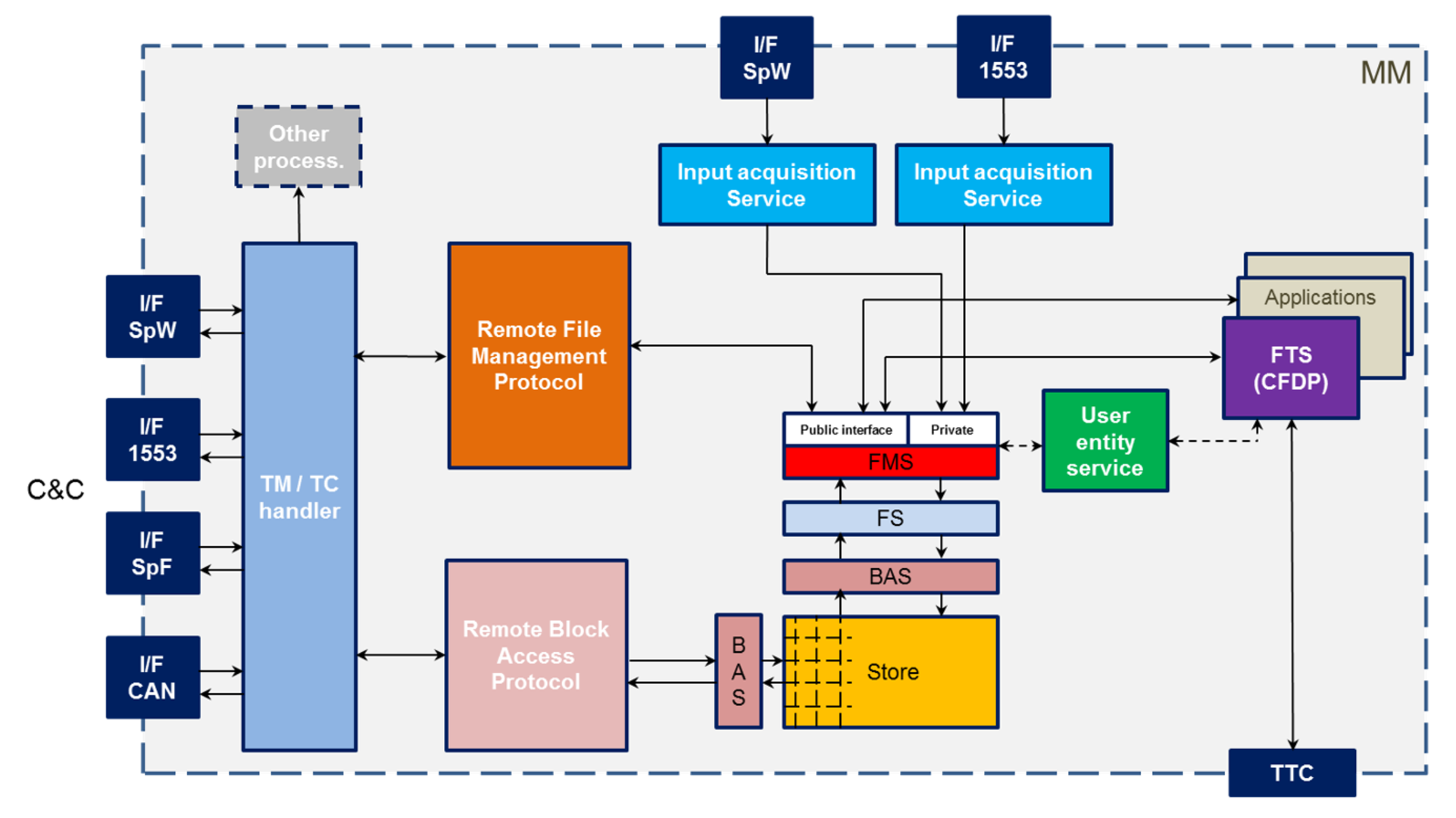File Management Services Interface Standardisation
| Programme: | TRP Workplan | Achieved TRL: | 3 |
| Reference: | T702-403SW | Closure: | 2016 |
| Contractor(s): | Spacebel (BE), TAS (FR), GMV (ES) | ||
The Mass Memory of spacecrafts is evolving to store not only the science data but also the platform configuration data, software, OBCP, timeline, etc. This is transcribed in the SAVOIR functional reference architecture through two data storage functions, one for the payload and one for the platform. The standardization approach initiated by SAVOIR shall be refined at the level of Interfaces and Services of these two functions.
The picture above shows the main interfaces and functions of the Data Storage unit. FMS stands for File Management Services, FS for File System, BAS for Block Access Services, FTS for File Transfer Services.
Objective(s)
The following objectives were tackled during this activity:
- Provide inputs to the SAVOIR Working Group for defining the Data Storage System Requirement Document (SRD).
- Specify the interfaces and services of the data storage function within spacecrafts to be translated into a SAVOIR Generic Data Storage Functional Specification document to be publicly reviewed.
- Specify a communication protocol supporting the access to remote storage units.
- Verify the defined requirements through an implementation of a representative prototype.

Achievements and status
The inputs provided to the SAVOIR Working Group have been used to produce a Data Storage System Requirement Document to be published in 2017 and the Generic Data Storage Functional Specification document to enter in public review in 2017. The communication protocol requirements still need to be refined and processed before publication. The prototype supported the verification of most of the identified services and interfaces and in particular the use of a file management system on local and remote storage units.
The picture to the right displays the fully simulated prototype that allowed to verify the correct management of data stored locally or remotely at two different levels: files and blocks.
Benefits
The standardization of interfaces and services for accessing the data on-board shall allow a better interoperability. Data Storage units can be developed from existing satellite technology adapted to provide standard interfaces. This design approach also allows any block within the Data Storage units to be replaced without affecting the remaining blocks, thus decreasing development times and increasing the re-usability and adaptability between different missions, in a snapshot this design approach will implement the SAVOIR aim: reduction of cost and development times and quality and performances increase.
Next steps
A follow-on GSTP activity called “SAVOIR Data Storage Services Demonstration” has been defined in the Avionics roadmap with the objective to reach TRL5. This activity aims at developing a file management library qualifiable for flight systems and at executing its services using a representative flight mass memory unit(s).


